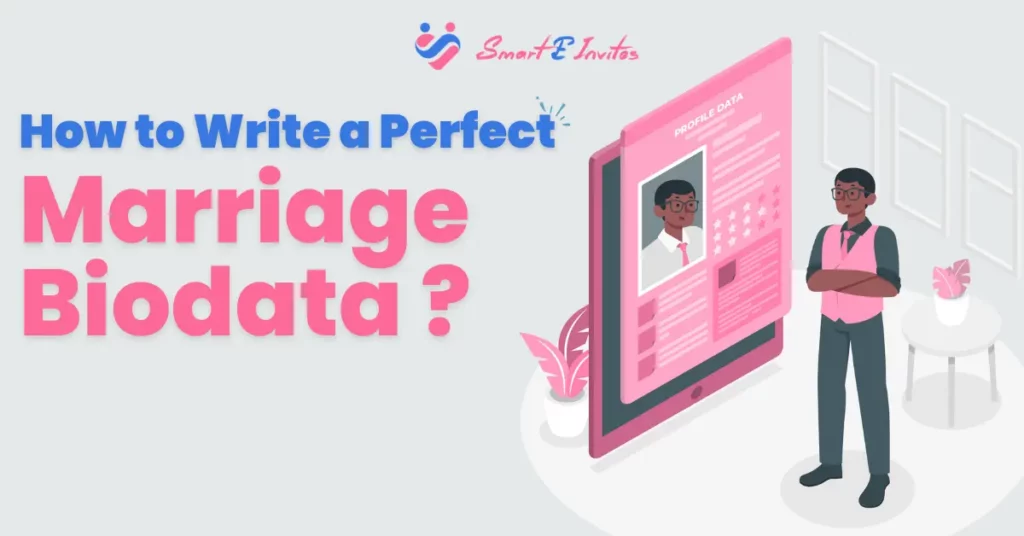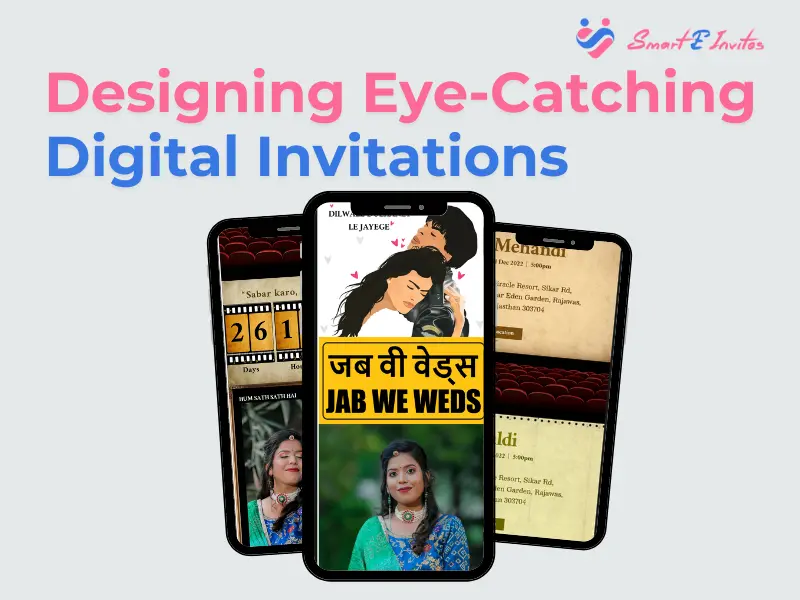In today’s online dating and matrimonial websites, the marriage biodata is crucial in introducing individuals to potential life partners.
It serves as a window into your personality, background, and aspirations, making it essential to craft a compelling biodata that stands out.
In this comprehensive guide, we will explore the art of creating a marriage biodata that reflects your uniqueness and enhances your chances of finding the perfect match.
So, let’s dive into the world of marriage biodata and discover the top 10 tips to make yours shine.
1. Brief Explanation of Marriage Biodatas
Marriage biodatas, also known as matrimonial profiles, are documents that provide essential information about individuals seeking a life partner.
They are prevalent in cultures worldwide, with the aim of facilitating the matchmaking process. A well-crafted biodata acts as a bridge between you and potential partners, offering insights into your personality, values, and life goals.
2. The Importance of a Well-Crafted Biodata For Marriage

Before delving into the tips for creating an outstanding marriage biodata, it’s crucial to understand why it matters. A well-crafted biodata can:
- Attract the right matches: It helps you connect with individuals who share your values and aspirations.
- Make a great first impression: A compelling biodata can capture the attention of potential partners and their families.
- Save time: It streamlines the matchmaking process, ensuring that you interact with individuals who are genuinely interested.
Now, let’s explore the key elements that should be included in your marriage biodata.
3. Essential Information in a Marriage Biodata
Your marriage biodata format should include the following key elements:
Personal Information
- Name: Provide your full name, including any titles or honorifics.
- Date of Birth: Mention your date of birth, which is essential for horoscope matching in some cultures.
- Gender: Specify your gender.
- Marital Status: Indicate whether you are single, divorced, or widowed.
- Height: Include your height, as it is often a consideration for potential matches.
Family Background
- Family Details: Share information about your parents and siblings, including their names and occupations.
- Cultural Background: Mention your cultural and religious affiliations, as these factors are significant in matchmaking.
Educational and Professional Details
- Educational Qualifications: List your educational achievements, starting with the highest degree earned.
- Occupation: Provide details about your current job, including your role and employer.
- Income: Mention your approximate income range if you are comfortable doing so.
Hobbies and Interests
- Hobbies: Share your hobbies and interests to give potential partners an insight into your personality.
- Expectations: Mention your expectations regarding your future partner, such as values, interests, and goals.
Now that we’ve covered the essential elements, let’s move on to crafting an eye-catching introduction.
4. Writing an Eye-Catching Introduction

Your introduction is the first thing potential matches will read, so it’s crucial to make it engaging and memorable. Here are some tips to create biodata for marriage with a compelling opening statement:
Showcase Your Personality
Use your introduction to convey your personality and unique traits. Are you a free-spirited adventurer or a thoughtful bookworm? Let your potential matches get a glimpse of who you are and create biodata for marriage online.
Highlight Your Goals
Mention your aspirations and what you hope to achieve in life. Whether it’s building a successful career or creating a loving family, clarity about your goals is attractive.
Express Your Values
Share your core values and beliefs. Whether it’s family, honesty, or spirituality, aligning values can form the foundation of a strong relationship.
5. The Importance of a Catchy Headline In An Indian Wedding Biodata Format
In addition to your introduction, a catchy headline can grab attention. It should be concise but compelling, giving potential matches a reason to explore your biodata further.
For example, “Seeking a Partner for a Lifetime of Adventure” or “Looking for Love and Laughter.”
6. Structuring Your Marriage Biodata
Now that you’ve captured your reader’s attention with a compelling introduction, it’s essential to maintain their interest by presenting your biodata in an organized and visually appealing manner.
Guidance on Formatting and Organization
- Use clear headings and subheadings to divide your biodata into sections.
- Use bullet points or numbered lists to make information easily scannable.
- Keep paragraphs concise and to the point.
- Use a clean and readable font with an online wedding biodata maker.
- Ensure proper spacing and margins for a clutter-free look.
How to Make Your Biodata Visually Appealing
Your biodata should be visually appealing to encourage potential matches to read it thoroughly. Consider the following tips:
- Use high-quality, professional photographs.
- Choose a clean and aesthetically pleasing layout.
- Incorporate colours that reflect your personality.
- Avoid clutter and excessive decoration.
7. Dos and Don’ts of Marriage Biodata Writing
To create a successful marriage biodata, it’s essential to be aware of common mistakes and best practices. Let’s explore these dos and don’ts.
Common Mistakes to Avoid
- Exaggeration: Avoid exaggerating your achievements or attributes.
- Negativity: Refrain from using negative language or mentioning past relationships in a negative light.
- Lack of Clarity: Ensure that your biodata is clear and easy to understand.
- Ignoring Privacy: Protect your personal information and share it only with serious potential matches.
Also Read – Best Wedding Invitation Templates For A Perfect Wedding: The Ultimate Guide
Best Practices for a Successful Biodata
- Honesty: Be truthful in your biodata to build trust with potential matches.
- Positivity: Use positive language and focus on your strengths and aspirations.
- Proofreading: Check for grammatical errors and typos to maintain professionalism.
- Customization: Tailor your biodata for each potential match, highlighting relevant aspects.
8. Adding Photos to Your Biodata

Including photographs in your biodata is a common practice. Here are some guidelines for selecting and presenting pictures:
- Choose recent, high-resolution photographs that accurately represent your current appearance.
- Include a variety of pictures, such as close-ups and full-body shots.
- Ensure that your attire is appropriate and reflects your style.
- Avoid overly edited or filtered photos that may misrepresent your appearance.
9. Tailoring Biodata for Different Cultures
Marriage biodatas vary across cultures, and it’s essential to adapt yours accordingly if you’re seeking matches from different backgrounds. Here’s how to do it:
- Research the expectations and preferences of potential matches from specific cultures.
- Customise your biodata’s content and format to align with cultural norms and prefer a wedding biodata template.
- Show respect for cultural traditions and values in your biodata.
Also Read – Hindu Wedding Rituals: The Ultimate Guide on Hindu Traditions
10. Review and Proofread

Before finalizing your marriage biodata, it’s essential to review and proofread it carefully. Consider these steps:
- Check for grammatical errors and spelling mistakes.
- Ensure that all information is accurate and up to date.
- Seek feedback from friends or family for a fresh perspective.
Conclusion
In the journey to finding your life partner, a well-crafted marriage biodata can be your greatest ally. By following the tips and guidelines outlined in this comprehensive guide, you can create a biodata that not only reflects your uniqueness but also increases your chances of finding the perfect match.
Remember, honesty, positivity, and a touch of creativity can go a long way in making your biodata stand out and leave a lasting impression.
Now, go ahead and start crafting your marriage biodata with confidence, and may your journey to love be filled with happiness and joy.
FAQs
Ques 1. Is it necessary to include my income in the biodata?
Ans Including your income in your marriage biodata is optional. If you are comfortable sharing this information, you can include it. However, it’s essential to prioritize honesty and only provide it if you are comfortable doing so.
Ques 2. How can I make my biodata culturally inclusive?
Ans To make your biodata culturally inclusive, research the expectations and preferences of potential matches from specific cultures. Customise your biodata’s content and format to align with cultural norms and show respect for cultural traditions and values in your biodata.
Ques 3. Can I use humour in my biodata?
Ans Yes, using humour in your bio-data can be a great way to showcase your personality and create a memorable impression. However, ensure that the comedy is light-hearted and inoffensive, as different people may have varying sensitivities to humour.


